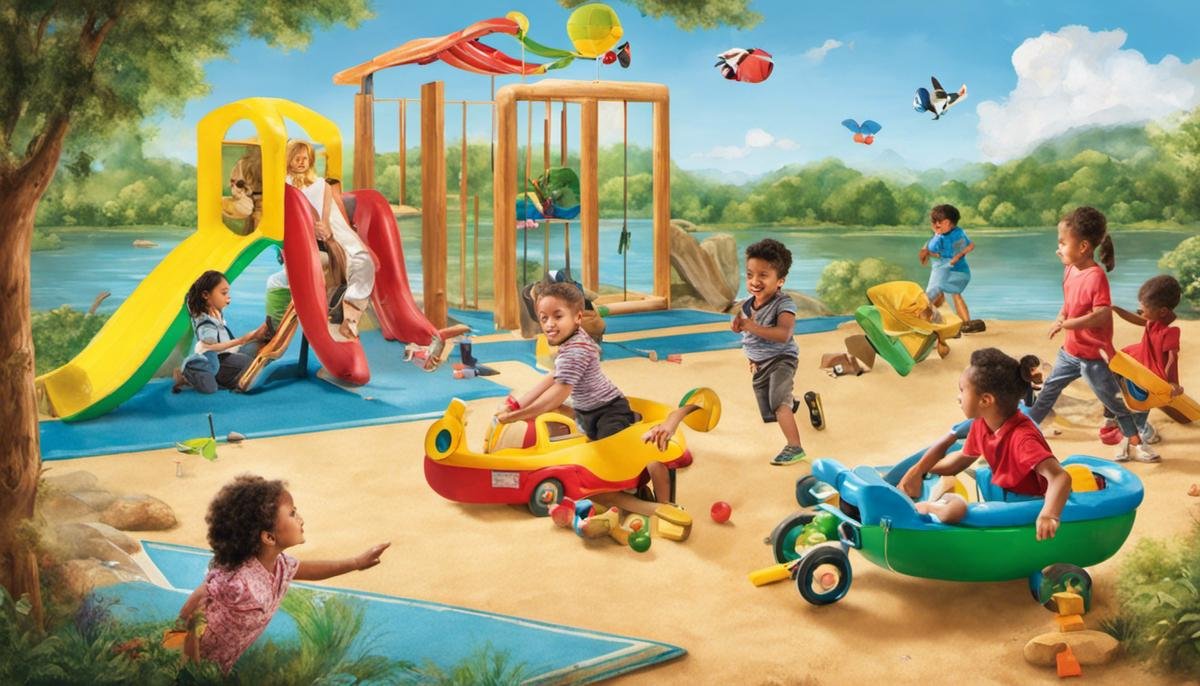
Parenting a child on the autism spectrum involves a journey of learning and understanding. Among the various therapeutic approaches recommended for autism, Applied Behavior Analysis (ABA) has shown a significant impact in supporting children’s development. Being well-informed about ABA therapy, its principles, process, and benefits is the first crucial step towards ensuring your child benefits optimally from it. Complementing this knowledge with an understanding of creating a supportive home environment and the aptitude to work effectively with ABA therapists can substantially augment your child’s progress in therapy. This information can prove indispensable in fostering your child’s personal growth and helping them reach their full potential.
Understanding ABA Therapy
Unravelling the Advantages of ABA Therapy for Your Little Ones
Hello dear reader, welcome back to our guide for better parenting! Today, we journey into a topic that’s close to many hearts – ABA therapy. ABA, or Applied Behavior Analysis, is a well-researched, result-oriented method established for children, especially those on the Autism spectrum or those with similar challenges. Let’s dive into the ‘what,’ ‘why,’ and ‘how’ of ABA therapy – an invaluable tool that can greatly enhance your child’s developmental journey.
ABA therapy is an extensive, scientific approach that can modify socially significant behavior. It works on the principle that behaviors, both appropriate and problematic, are learned and therefore can be changed. The therapy involves determining and assessing the relationship between a child’s behavior and their environment, and then, using that information to help them develop and sustain beneficial behaviors.
How does ABA therapy benefit your child? Well, the gems of this therapy are many! It primarily assists your child in leading a more socially engaged and independent life. It enhances communication skills, improves focus and academic performance, develops fine motor skills, and nurtures basic skills like listening, observing, and imitating. It also assists in curbing aggressive or self-harming behaviors that your child might exhibit due to frustration or inability to communicate effectively.
Now, wouldn’t it be lovely to delve a bit deeper and gain a firmer grasp on the ‘how’? The hallmark of ABA therapy lies in its individualized approach. A Board Certified Behavior Analyst (BCBA) will define personalized strategy based on your child’s skills, needs, interests, preferences and family situation. They will work with your child in their natural environment – at home, school, or within the community – helping them practise and reinforce healthier patterns of behavior.
Therapists break down complex tasks into small, manageable steps. They then meticulously teach, observe, and reinforce each of these steps. This teaching strategy, often referred to as “discrete trial training”, helps children with Autism learning more effectively. Additionally, therapists consistently encourage positive behavior using various reinforcement techniques. A treat, verbal praise, or simply a smile can be a big motivator for little ones!
Therapists also involve parents and caregivers in the therapy process to ensure consistency in teaching and reinforcement. When you understand and adopt ABA strategies, it helps maintain and nurture the progress your child achieves during the therapy sessions. It’s like the saying you often hear – “It takes a village to raise a child”, and everyone plays a pivotal role in the child’s learning journey.
That’s all about ABA therapy for now, dear reader. Embracing such therapy can be life-changing, truly making a difference in the quality of life for your beloved kiddo. Remember, every step, big or small, unfolds a new aspect of their potential. So, let’s join hands, step into this world of purposeful learning, and cheer our little wonders on! Here is to successful journeys and shared celebrations!

Creating a Supportive Environment
Nurturing ABA Therapy Success: Simple Yet Effective Ways to Adjust Your Home Environment
When constructing an environment conducive to Applied Behavior Analysis (ABA) therapy for your child, it’s crucial to carve out unique spaces that encourage a variety of activities. ABA therapy is not a one-size-fits-all approach, and your home should reflect this individualized method. But going about this process might seem overwhelming at first. Fear not! Let’s break this task down into manageable steps that correlate with fundamental aspects of ABA therapy.
- Foster a Structured Environment: Begin by creating a dedicated therapy area within your home. A designated space allows your child to understand it is time for therapy and helps them focus on activities. The area should be clutter-free and equipped with essential therapy materials, toys, and learning tools to minimize distractions and maximize focus on the task at hand.
- Organization is Key: As you set up the therapy space, always keep items in the same spot. Consistency plays an integral role in ABA therapy and helps children to build a routine. Therefore, keeping your child’s therapy materials and toys organized in a similar way for each session can improve their learning and predictability.
- Designated Play Space: Outside of the structured therapy area, establishing a fun, relaxed space where your child can enjoy their free time is essential. This space distinctively separates work and play, encouraging relaxation, and reducing pressure outside of therapy sessions.
- Sensory-Friendly Areas: Children undergoing ABA therapy often have sensory sensitivities. Therefore, adjusting your home environment to make it more sensory-friendly can be highly beneficial. This could include using muted, calming colors on the walls, minimizing noise, creating comfortable seating areas, and incorporating sensory objects such as weighted blankets or fidget toys.
- Public Spaces for Social Interaction: ABA therapy also targets social skills. Creating a shared space in your home where your child can interact with family members is crucial. It can encourage social interactions and improve their communicative abilities. These collaborative areas should be welcoming and comfortable to promote habitual family interactions.
- Visible Visual Schedules: Visual cues or schedules can be extremely useful in ABA therapy. Place visual schedules around your home in areas where specific tasks or activities occur. These visuals provide a clear alternative to verbal instruction and aid the child in understanding what is expected of them.
- Promote Independence: Set up the home environment to foster your child’s independence. Simple adjustments like keeping essential items at their reach, labeling items, or creating step-by-step visual instructions for routine activities can make a massive difference in promoting self-reliance.
Remember, every child is unique, and these adjustments should cater to their individual needs and preferences. And while this might be a new territory for many, know that you’re not alone. Empowered with these adjustments and your unwavering support, your child’s ABA therapy can indeed thrive. So, ready, set, and lets modify!

Collaborating with ABA Therapists
Strengthening the Bonds: Effective Partnership with Your Child’s ABA Therapists
After gaining a solid understanding of ABA therapy for children with Autism and similar challenges, it’s crucial to examine strategies that can help foster a strong, effective partnership with your child’s ABA therapists. An active role in your child’s journey can make a significant difference in their development and quality of life. The following strategies are designed to help strengthen the parent-therapist alliance, enhance the therapy’s effectiveness, and help your child thrive.
Embrace Structure from the Start
A structured environment promotes predictability, which helps children in ABA therapy feel secure and comfortable. Consistency in routines, rules, and expectations can assist in reducing anxiety and supporting behavior changes. Keep communication open with your child’s ABA therapists about the schedule they’re employing during sessions to implement a similar structure at home.
Emphasize Organization
A well-organized space promotes focus and reduces distractions, two critical elements for children undergoing ABA therapy. Work with your child’s ABA therapists to understand the organization tools they use and mimic these within your home. This could involve using labeled bins for toys or color-coding activity areas.
Create Designated Play Spaces
A specific play space gives your child a secure location for their favorite activities. It can serve both as a reward area and a spot for skill-building; for instance, through play, children can learn how to follow instructions, take turns, and express creativity. Mirror the play spaces used in therapy sessions to maintain familiarity and reinforce learning.
Consider Sensory-Friendly Areas
Children with Autism often have particular sensory needs. Creating sensory-friendly spaces in your home that mimic those found in therapy can aid in reducing sensory overload. Work with therapists to understand your child’s specific sensory triggers and preferences, and build these spaces accordingly.
Explore Public Areas for Social Interaction
Children in ABA therapy could also benefit from exploring social contexts outside the home. Observing your child’s interaction in public spaces provides ABA therapists with valuable information to tailor their approach. Regular visits to the park, bookstore, or a play center could serve as opportunities for the child to interact with peers and learn social norms.
Employ Visible Visual Schedules
Visual schedules are commonly used in ABA therapy to guide children through expected sequences of activities. Having a similar schedule at home enables the child to understand what is expected of them each day, reducing uncertainty and fostering a sense of control. Connect with your child’s therapists to create a matching visual schedule.
Promote Independence
Lasty, encourage independence wherever possible. From dressing up to cleaning up after playtime, every opportunity for independence should be seized as it builds confidence. Remember, ABA therapists aim to teach skills that children can use outside of therapy. Reinforcing those skills at home broadens your child’s ability to apply the skills in various settings.
Navigating the path of ABA therapy can be intense and demanding, but remember, you are not alone. Building a robust partnership with your child’s ABA therapists bridges the gap between therapy and home, enhancing the child’s learning experience. With understanding, patience, and collaboration, you can create greater opportunities for your child to flourish.

Supporting your child through their journey with ABA therapy necessitates understanding, patience, and a significant amount of involvement. By establishing a solid foundational knowledge of ABA therapy, learning to modify your home environment to promote learning, and mastering how to work collaboratively with ABA therapists, you can indeed make a profound impact on your child’s progress. Remember, each small step is a significant stride towards your child’s development, and your support can make all the difference. This guidance can hopefully act as a beacon for your journey, empowering you with the tools to help your child thrive.




